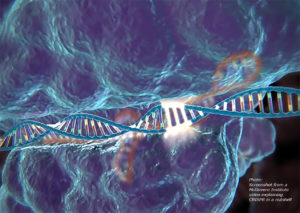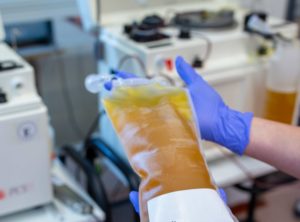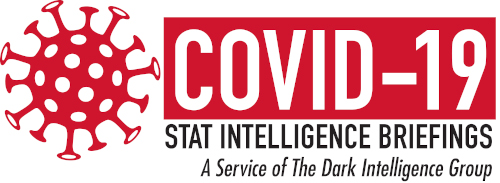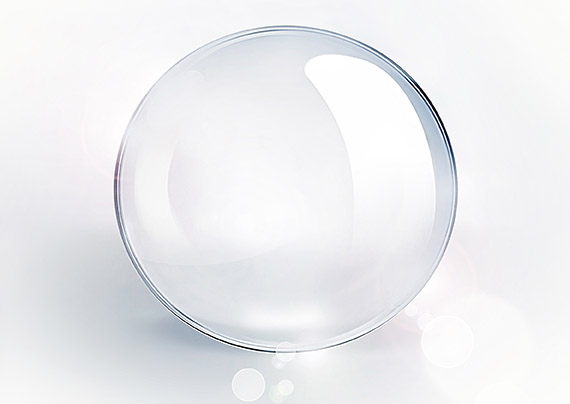Four key healthcare innovations that the COVID-19 pandemic gave us in 2020
2020 echoes as a memorable year for clinical laboratories and the healthcare profession in general. In many ways, this year may be one of the most difficult years the healthcare profession has experienced. However, in the response to challenges that 2020 has brought, the scientific community stars in the development of several healthcare system innovations.
The COVID-19 STAT Intelligence Briefings Service covered many of these innovations as they were developed over the course of this tumultuous year. Now as 2020 draws to a close, it is a good time to look back over some of the key innovations that resulted from the incredible response of the scientific community to the challenges created by the global COVID-19 pandemic.
1. App for At-Home Phlebotomy
In late April, a new app for mobile phones, called LabFly, was developed by Northwell Health Laboratories. The app has been used to arrange at-home lab specimen collections. This was particularly helpful during lockdowns, but it has widespread applications beyond the context of the pandemic. (See Northwell Health Labs Uses Mobile Phlebotomy App to Better Serve Patients, Increase Test Volume and Revenue During COVID-19 Outbreak.)
“It’s an app where you can request your phlebotomist. It’s kind of similar to Lyft or Uber, except it’s for home phlebotomy,” said Chris Zavala, Director of Business Development and Marketing at Northwell at the time. “Patients can create their profile on the app, take a picture of the prescription, and we will dispatch a phlebotomist to their home. They can watch the phlebotomist in route to their home, like Uber, and they can rate the phlebotomist afterwards.”
While Northwell initially used this application for its own laboratory, Northwell has since marketed the technology to clinical laboratories to enable them to white label the app and use it for their own clinical laboratories.
2. Application of CRISPR Technology in Clinical Diagnostics
In June, we reported on clustered regularly interspaced short palindromic repeats (CRISPR) technology, a more recent advancement in genetic technology. (See CRISPR Technology in SARS-CoV-2 Diagnostic Testing May Provide Clinical Laboratories With More Cost Effective, Faster Testing Method.) Until the COVID-19 pandemic, CRISPR had never been used in the context of clinical diagnostics. This changed in early May when Sherlock BioSciences was granted an emergency use authorization (EUA) for its Sherlock CRISPR SARS-CoV-2 Kit.

“CRISPR seems to be equal to, or perhaps a little bit better than, PCR as far as test quality is concerned,” Frederick (Fritz) Kiechle, MD, PhD, Medical Director at Boca Biolistics in Pompano Beach, Florida, told STAT COVID-19 at the time.
“The cost-per-test reduction and benefits are enormous,” Kiechle said. “It is super easy to do, and you don’t need any RT-PCR equipment which is very expensive and heavy. The cost of reagents for the isothermal amplification methods are very low compared to the reagents for RT-PCR. So everything you look at implies that you are looking at a better financial model for success in terms of cost per test over time.”
In mid-August, Sherlock announced a partnership with Dartmouth College. (See CRISPR-Based COVID-19 Testing Technology Continues to Advance with Recently Announced Dartmouth Research Collaboration.) Research on the diagnostic applications of CRISPR continues.
3. Contact Tracing Apps
Due to the sudden and widespread need for contact tracing on a scale that has never before been seen, Google and Apple (by June) had launched a joint venture to create contact tracing technology that was uploaded directly to smartphones. The app was designed to use Bluetooth technology to keep a record of every other user of the app with whom an infected individual had been in contact. This information would be used if the individual was diagnosed with COVID-19. (See Emerging SARS Contact Tracing Technologies May Significantly Increase Need for COVID-19 Testing.)
While this technology is still being adapted and has yet to see widespread use in many states, contact tracing could be the first step in using smartphones for epidemiological research. Another potential benefit is that contact tracing may provide users with better infectious disease exposure data. The main potential drawback for contact tracing remains privacy. Many people have concerns, despite the precautions that Google and Apple have taken. It remains to be seen how contact tracing will affect its long-term development.
4. New Treatments
Treatments for COVID-19 began to emerge in the later stages of 2020 as researchers made breakthroughs that allowed for these new treatment modalities. (See FDA Approves First COVID-19 Antiviral Treatment That May Increase Testing Volumes for Clinical Laboratories.)
The two main treatments that are currently authorized by the FDA include convalescent plasma and monoclonal antibodies.

Convalescent plasma received EUA in late August, opening the doors for the most widespread use of this technology. (See Testing Donated Plasma: Clinical Laboratories Should Be Aware of Overlooked Requirement.)
While the use of convalescent plasma certainly precedes the COVID-19 pandemic, the treatment has never been used to the extent that it has been used during this pandemic. Widespread use of convalescent plasma and investment into its research may allow for other applications in the future.
Similarly, monoclonal antibodies have been used prior to the pandemic, but the amount of research and publicity that this technology has received during the pandemic may increase attention to further applications.
—By Caleb Williams, Editor, COVID-19 STAT






